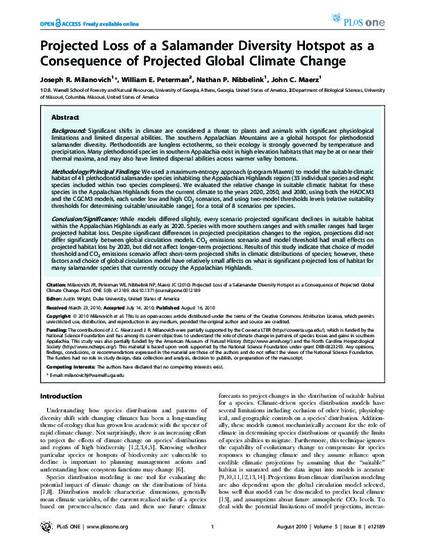
Article
Projected Loss of a Salamander Diversity Hotspot as a Consequence of Projected Global Climate Change
PLOS One
Document Type
Article
Publication Date
1-1-2010
Disciplines
Abstract
Significant shifts in climate are considered a threat to plants and animals with significant physiological limitations and limited dispersal abilities. The southern Appalachian Mountains are a global hotspot for plethodontid salamander diversity. Plethodontids are lungless ectotherms, so their ecology is strongly governed by temperature and precipitation. Many plethodontid species in southern Appalachia exist in high elevation habitats that may be at or near their thermal maxima, and may also have limited dispersal abilities across warmer valley bottoms.
Creative Commons License
Creative Commons Attribution-Noncommercial-No Derivative Works 3.0
Copyright Statement
© Public Library of Science, 2010.
Citation Information
Milanovich, Joseph R., William E. Peterman, Nathan P. Nibbelink, John C. Maerz, and Justin Wright. (2010). "Projected Loss of a Salamander Diversity Hotspot as a Consequence of Projected Global Climate Change." PLoS ONE. 5 (8), http://dx.doi.org/10.1371/journal.pone.0012189

Author Posting © 2010, Public Library of Science. This article is posted here by permission of Public Library of Science for personal use, not for redistribution. The article was published in PloS One, Volume 5, Issue 8, http://dx.doi.org/10.1371/journal.pone.0012189